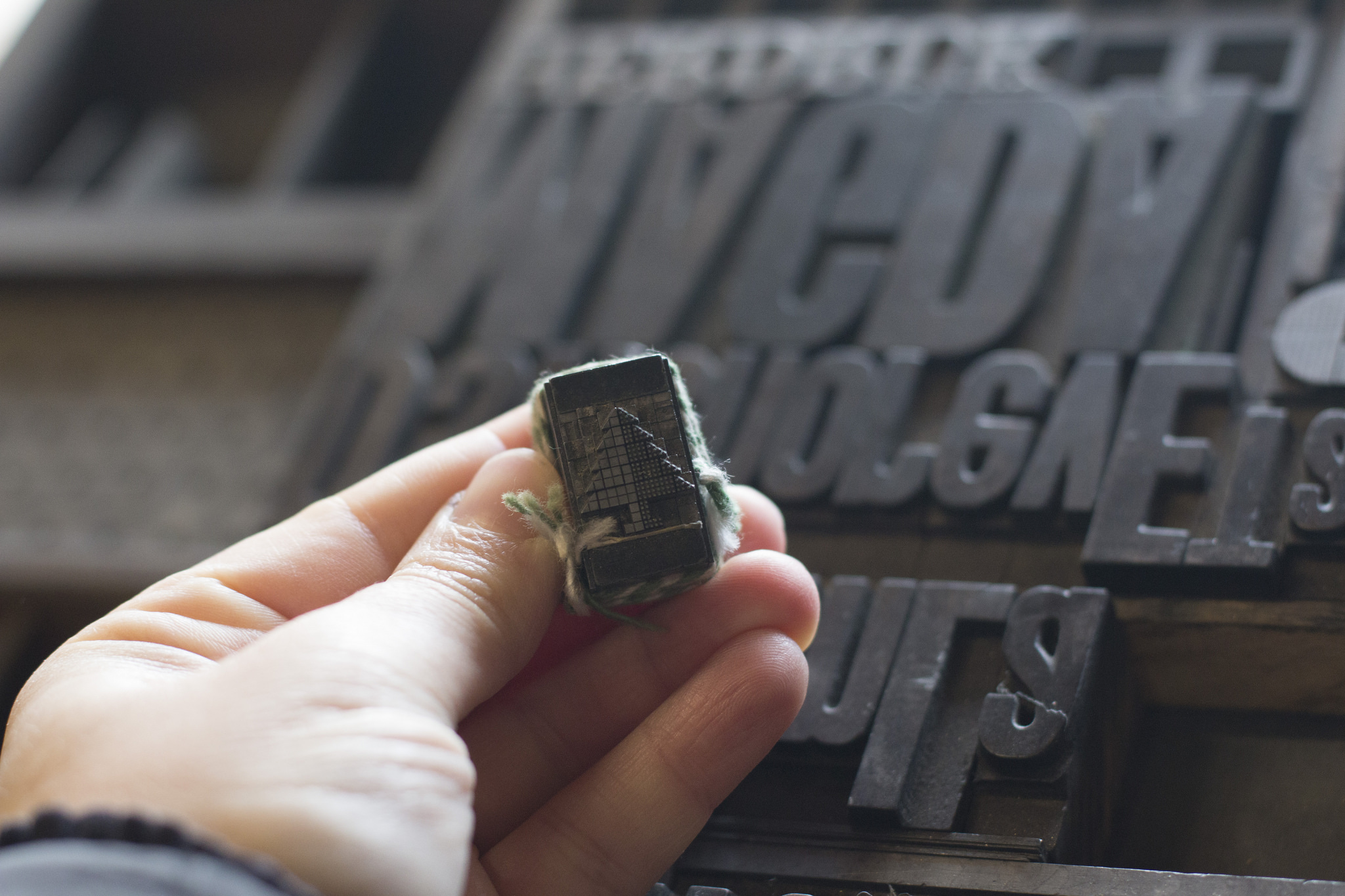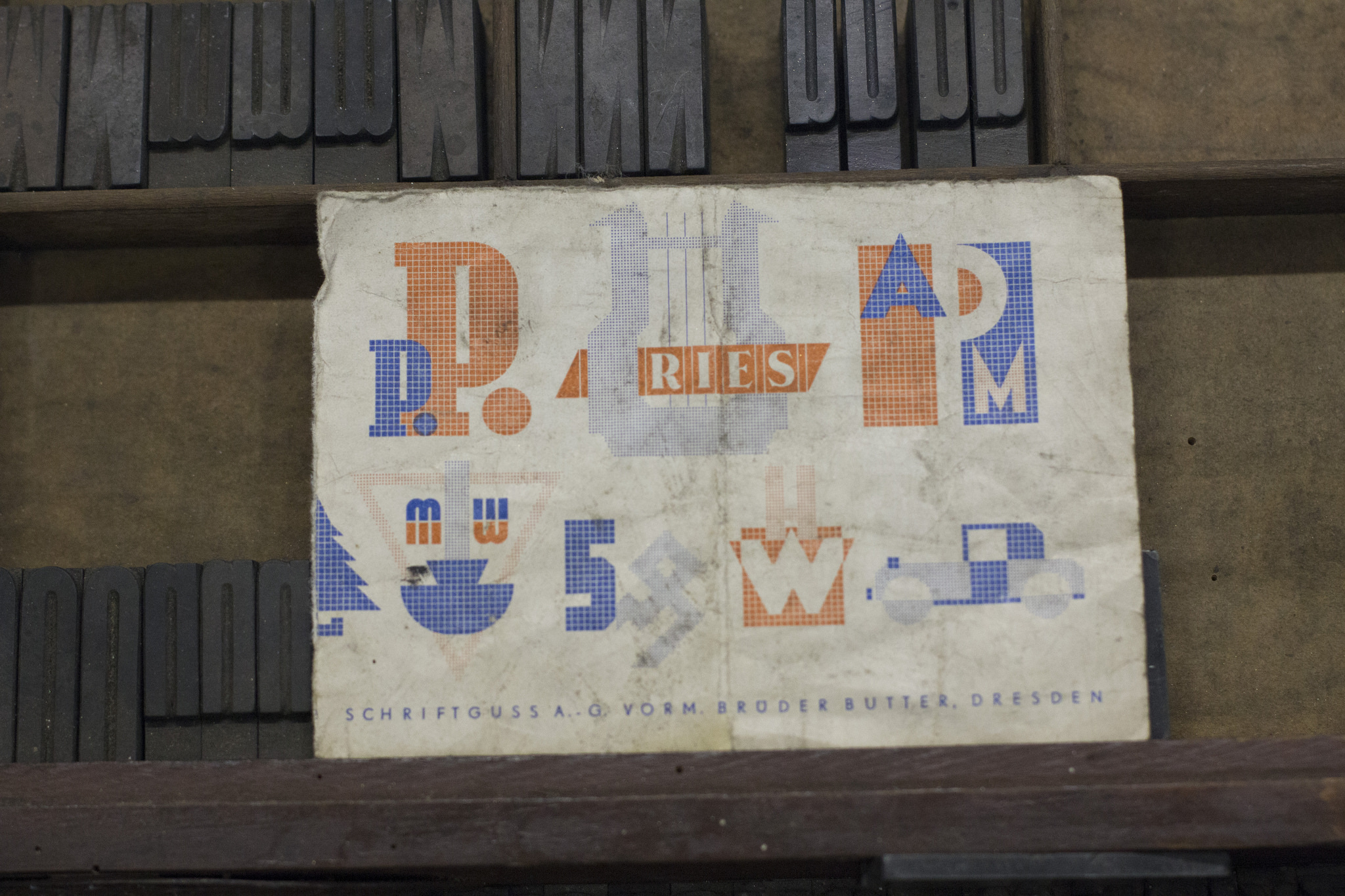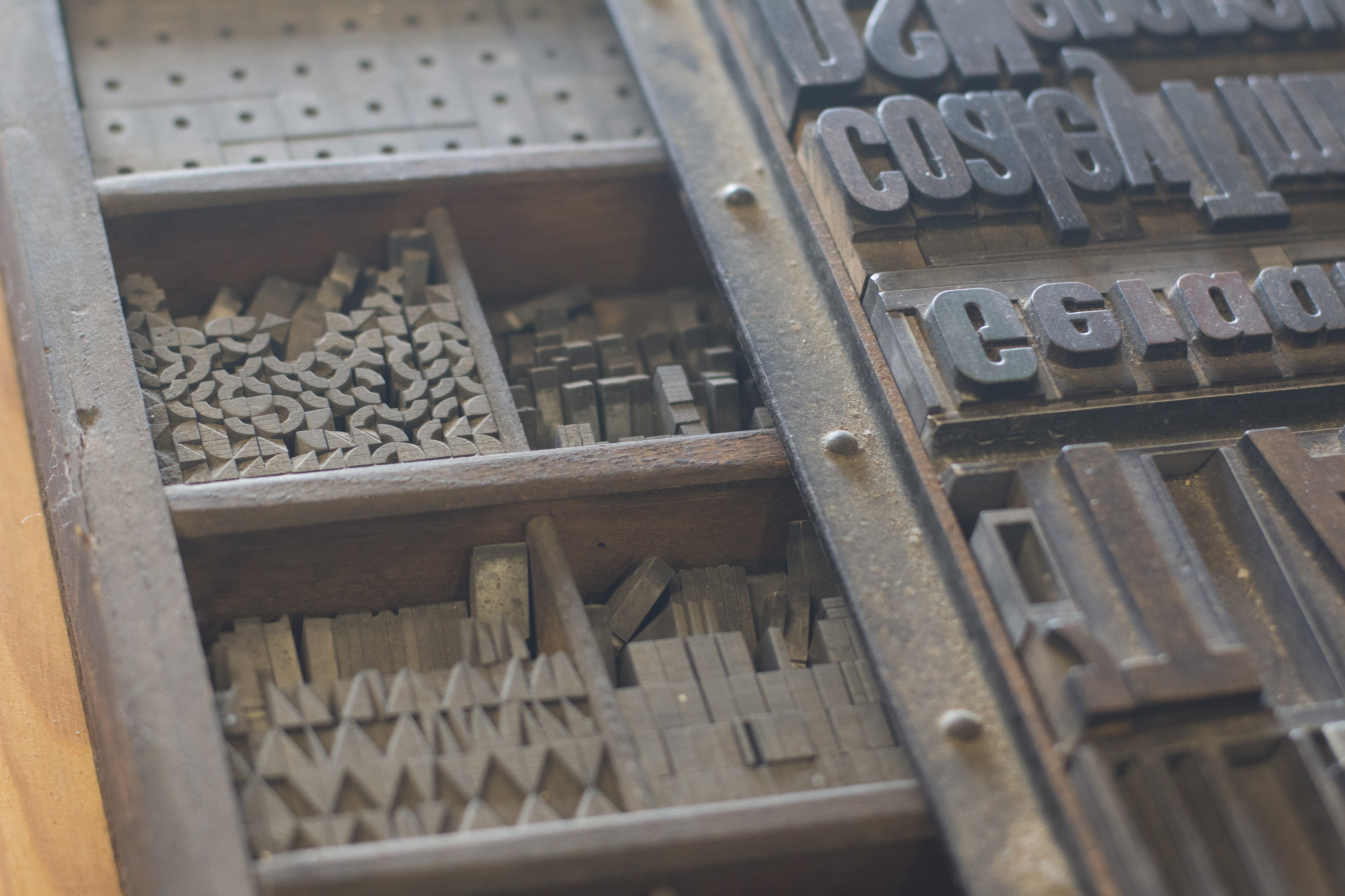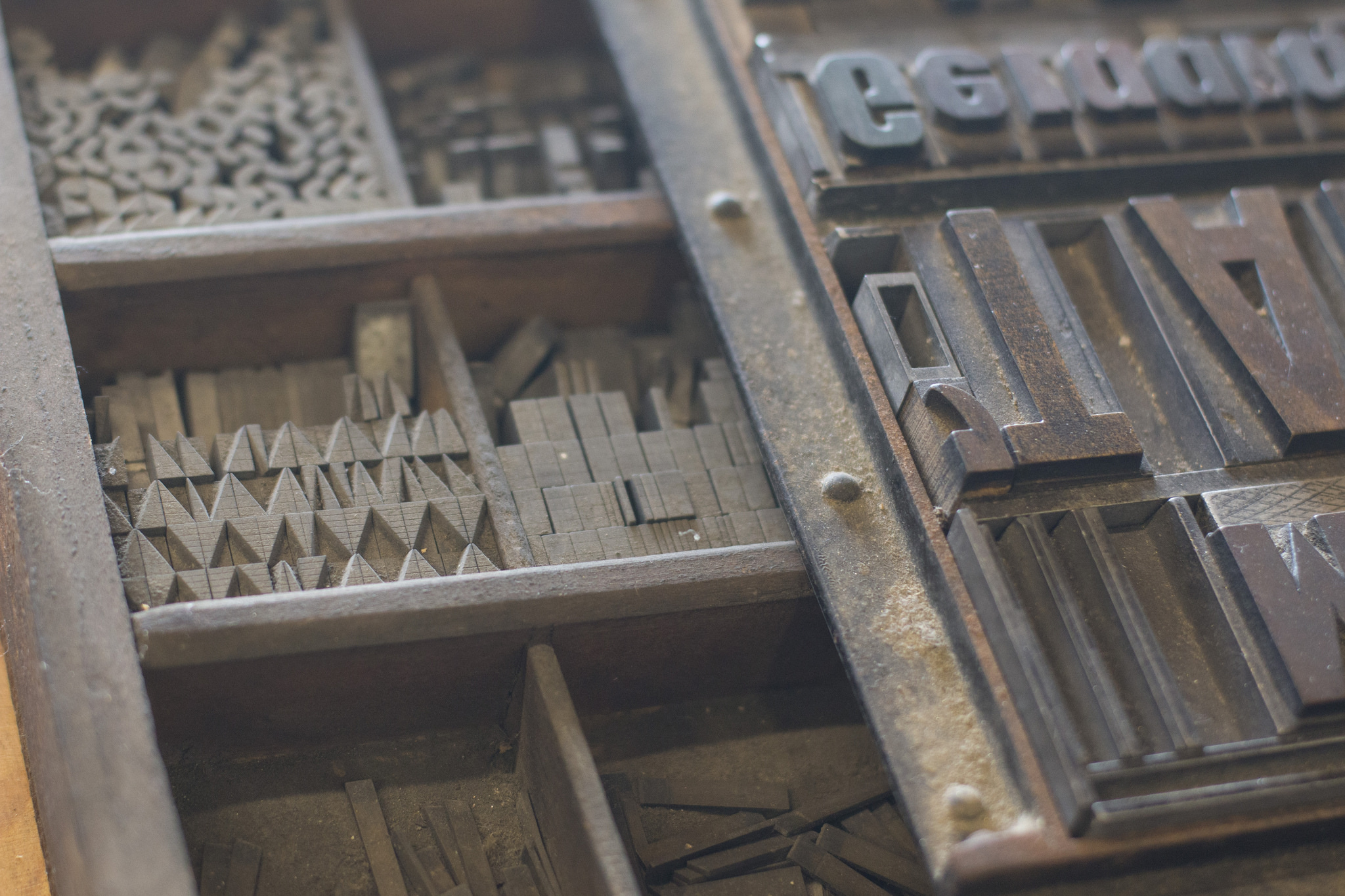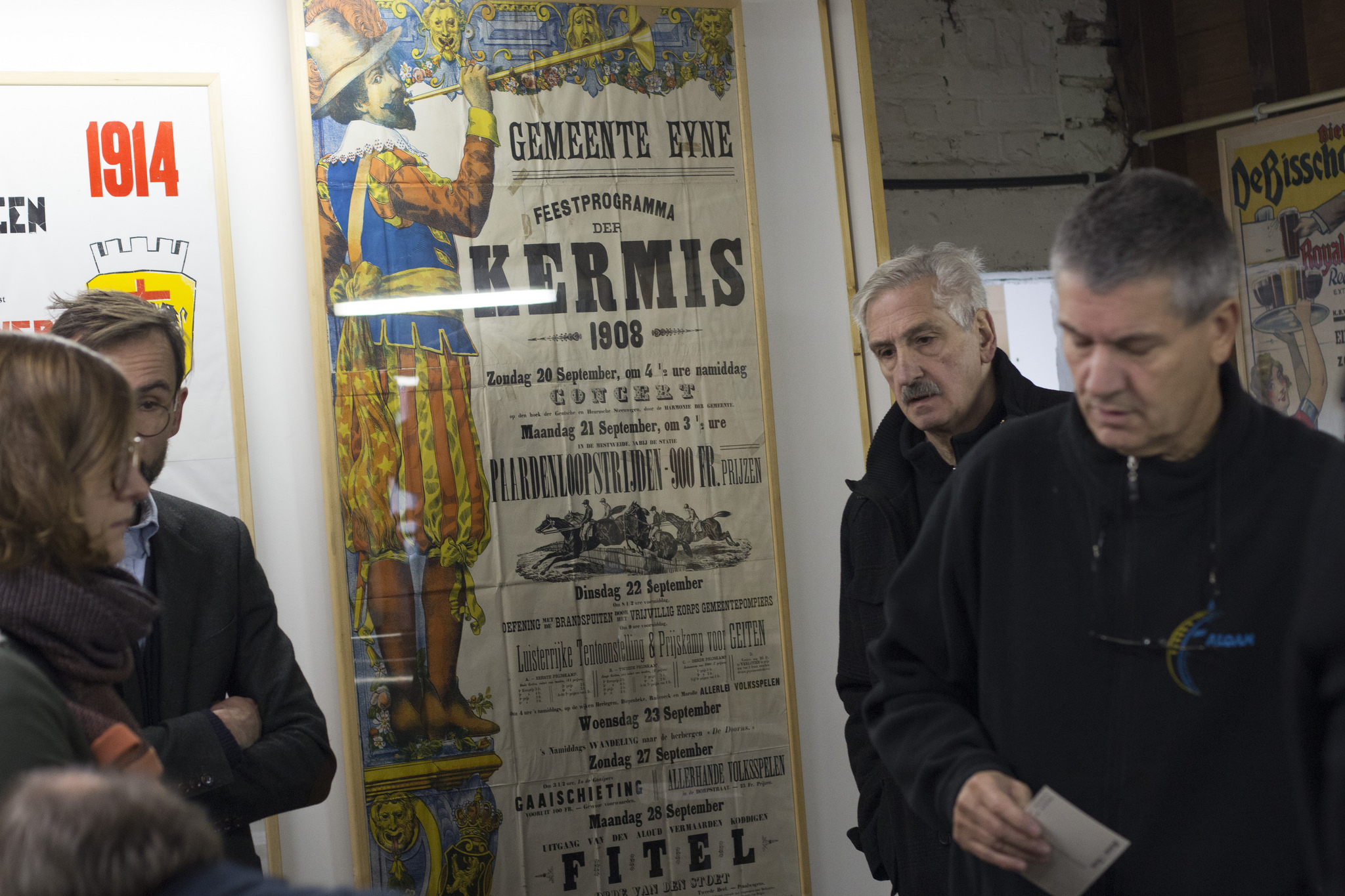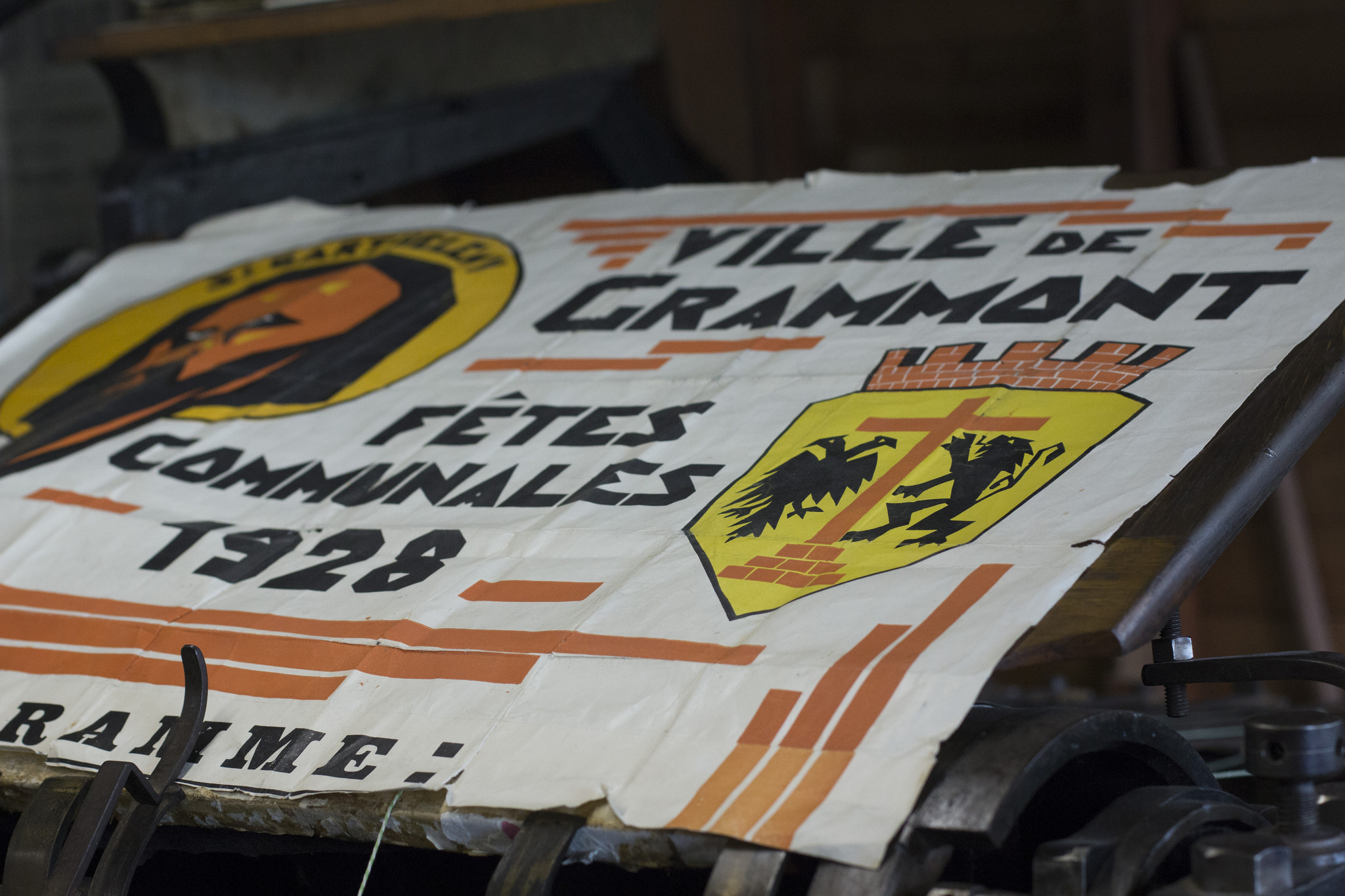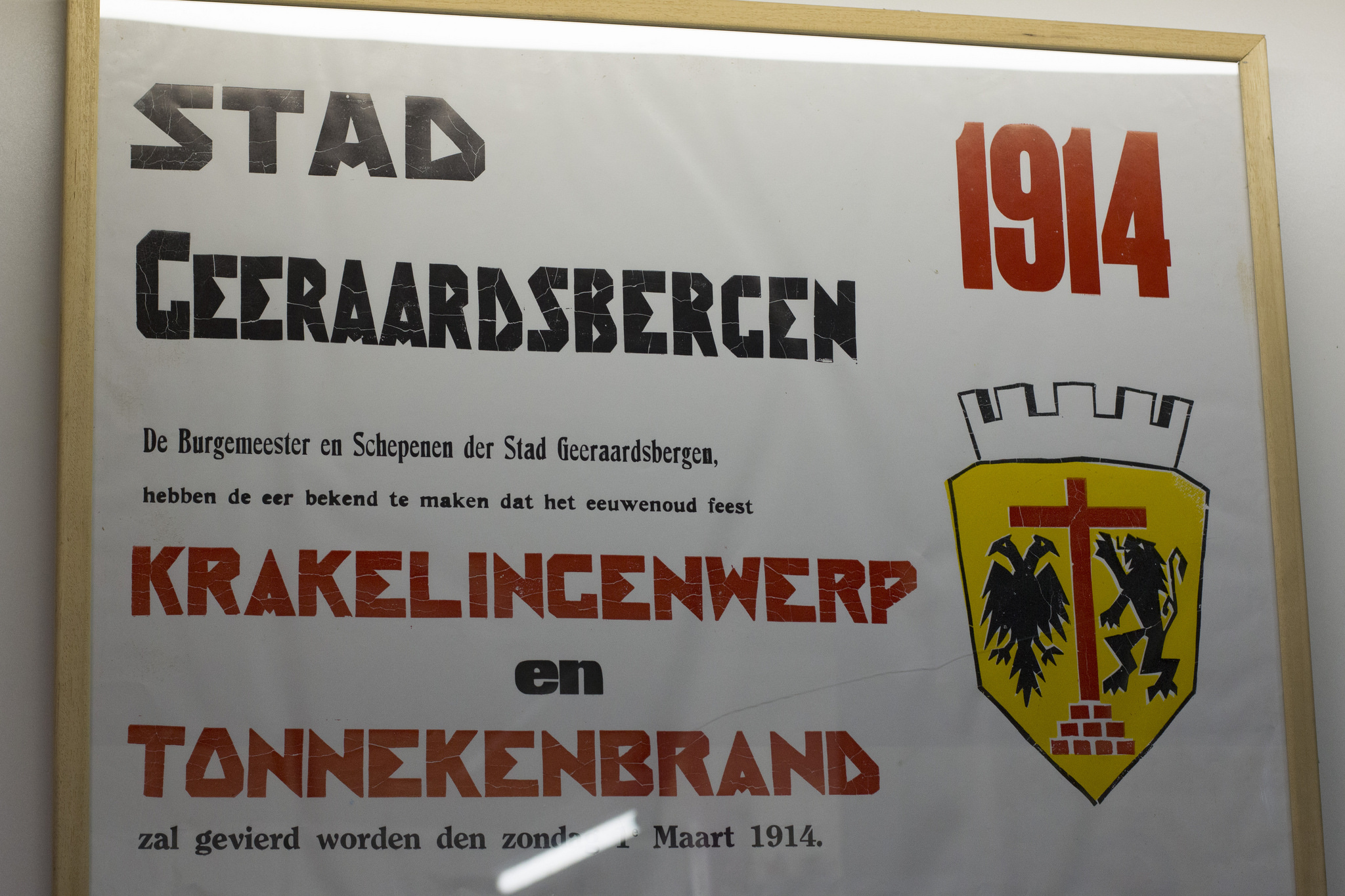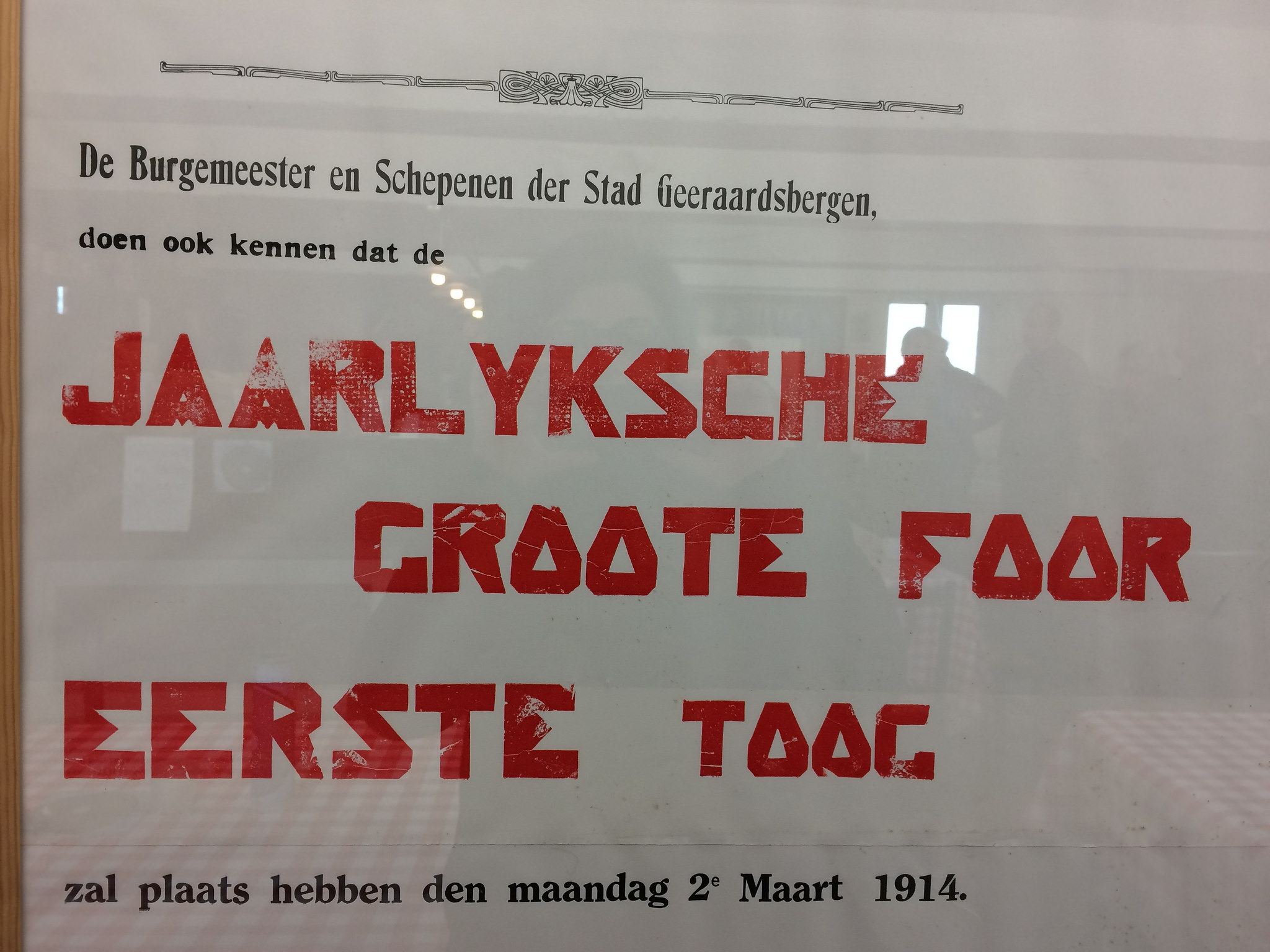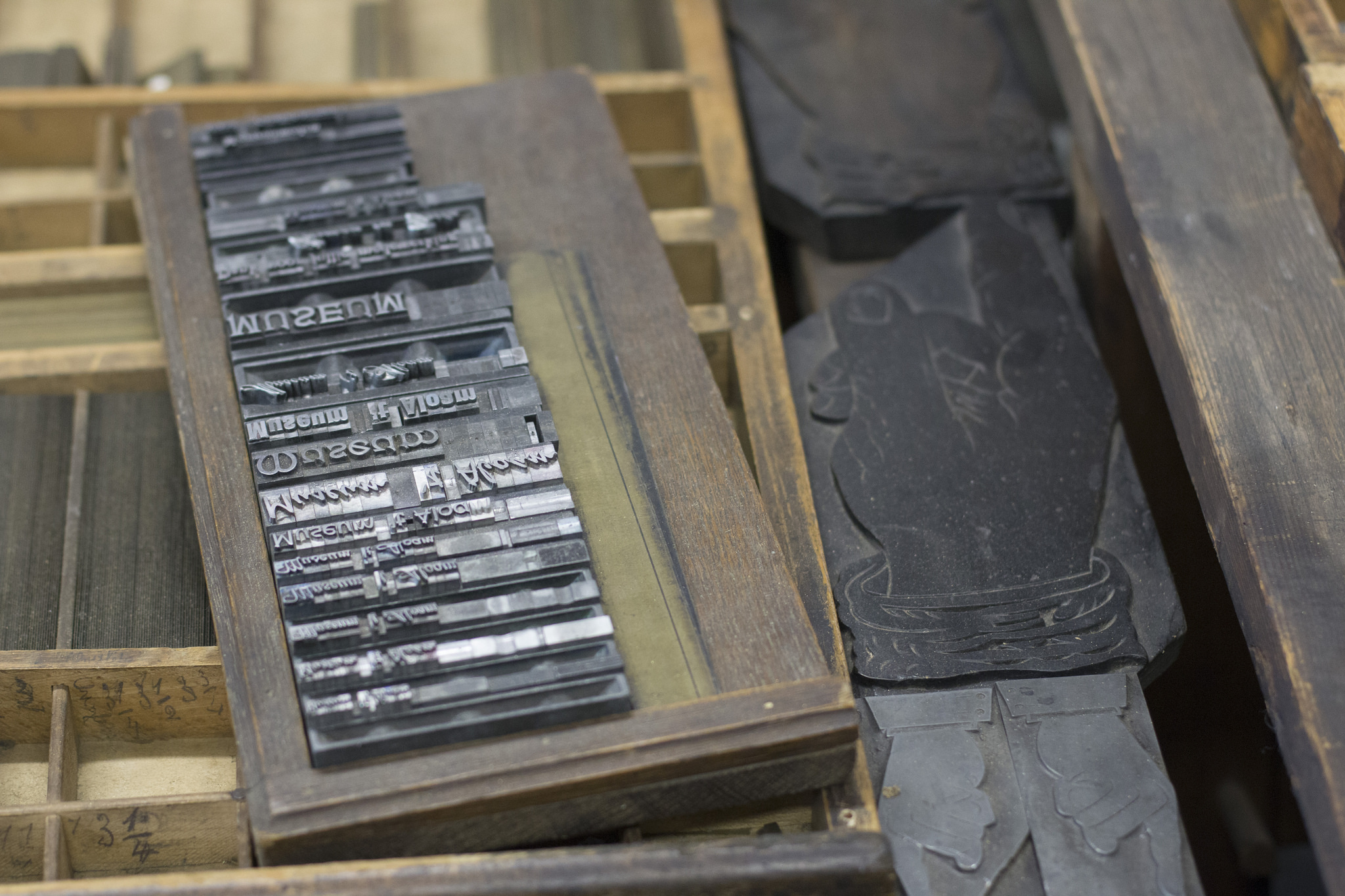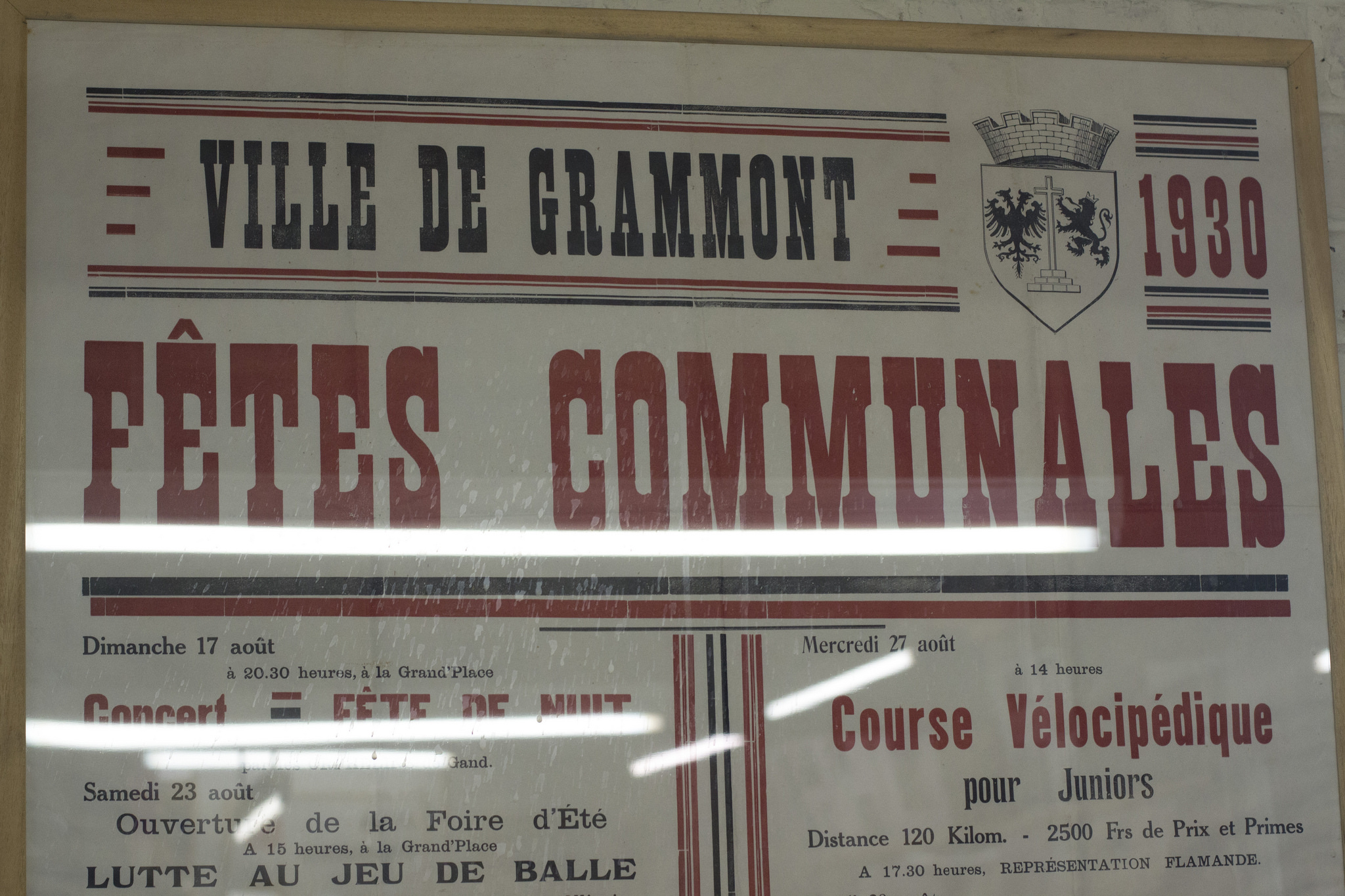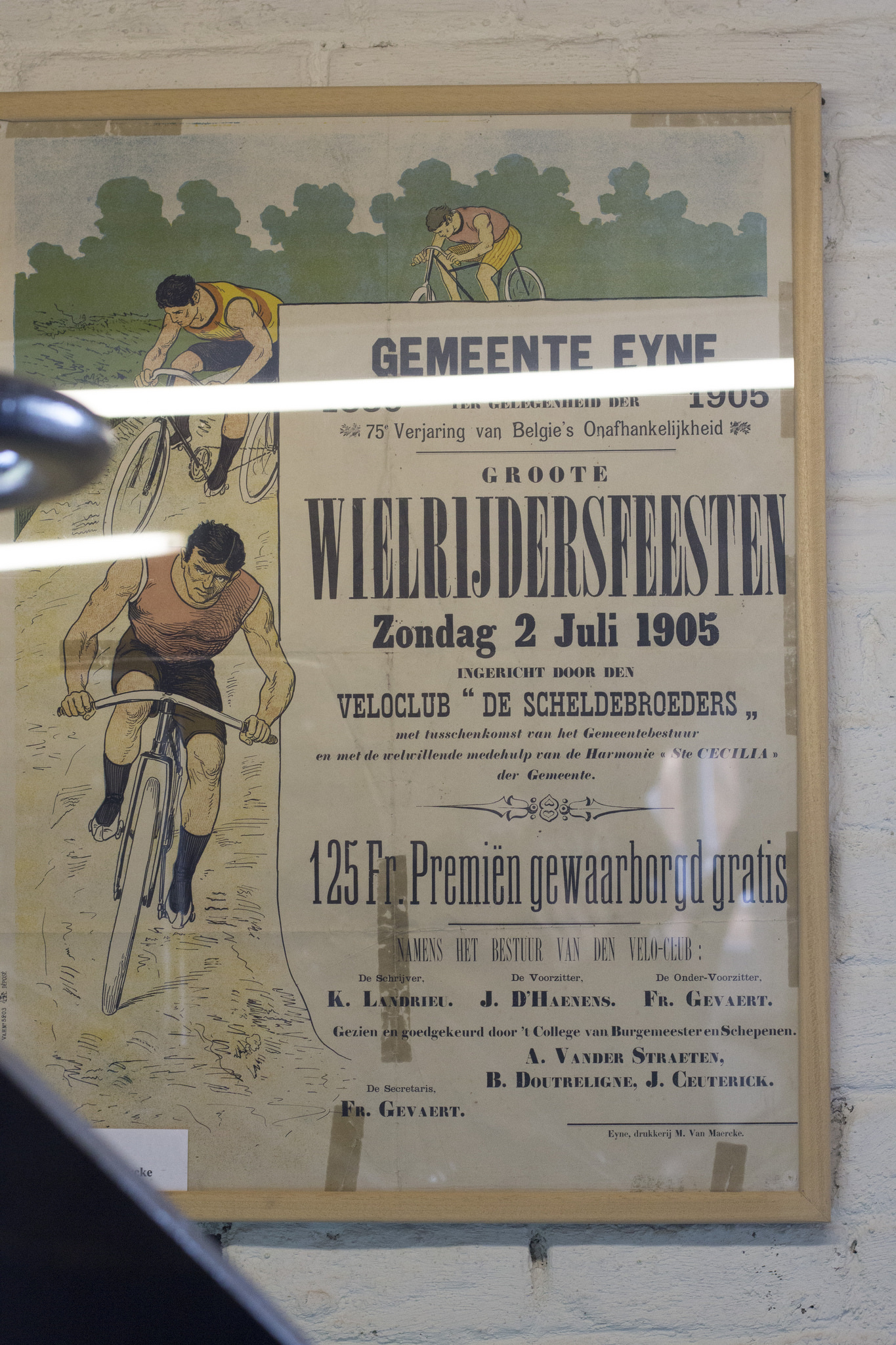The Museum 't Aloam in Viane/Geraardsbergen is housed in the Mertensmolen, a working water mill. The origin of the mill dates back to 1293. Between 1848 and 1905, 2 new water turbines were added and it was completely restored in 2006. Finally, in 2011 the printing house was added to the museum.
After having a light breakfast at the museum cafe, decorated with large size letterpress printed posters and a beautiful ceramic painting in Art Deco style, we followed the guide who took us outside the building to enter the mill house from the backyard.
The interior of the house is furnished in 1930s style with emphasis on several crafts and the collection of tools used by the farrier, shoemaker, cooper, blacksmith, plumber, woodworker, cigar maker, butcher, clog and hat maker etc.
"My wife is the daughter of the last miller," says Jef Merckaert, one of the co-owner of the mill. "Her father, together with his brother, operated a flour mill until 1992. They made flour for bakers. When they stopped 24 years ago, 700 years of millenary history came to an end in Viane. My parents, Herman Merckaert and Greta De Saeger, bought the mill site in 2002, which had fallen into disrepair. My father was looking for a building to accommodate his collection of old tools. Four years later they opened the museum t 'Aloam."
Following the guide - Geert Mollaert, who turned out to be a former printer currently volunteering at the printing department of the museum, we took the stairs to the upper room to find ourselves in a tiny room filled with typewriters and various printmaking-related objects from previous century.
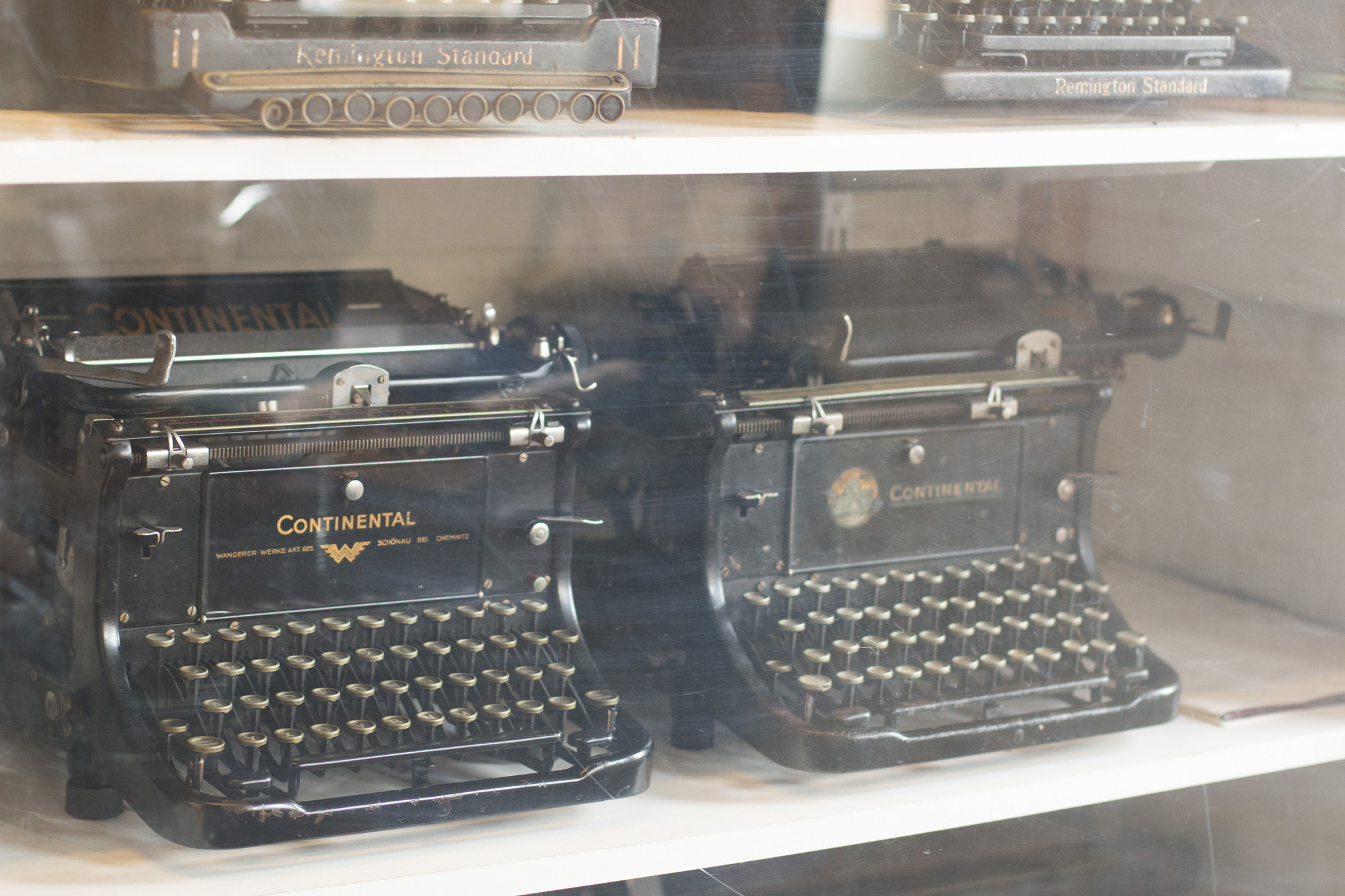
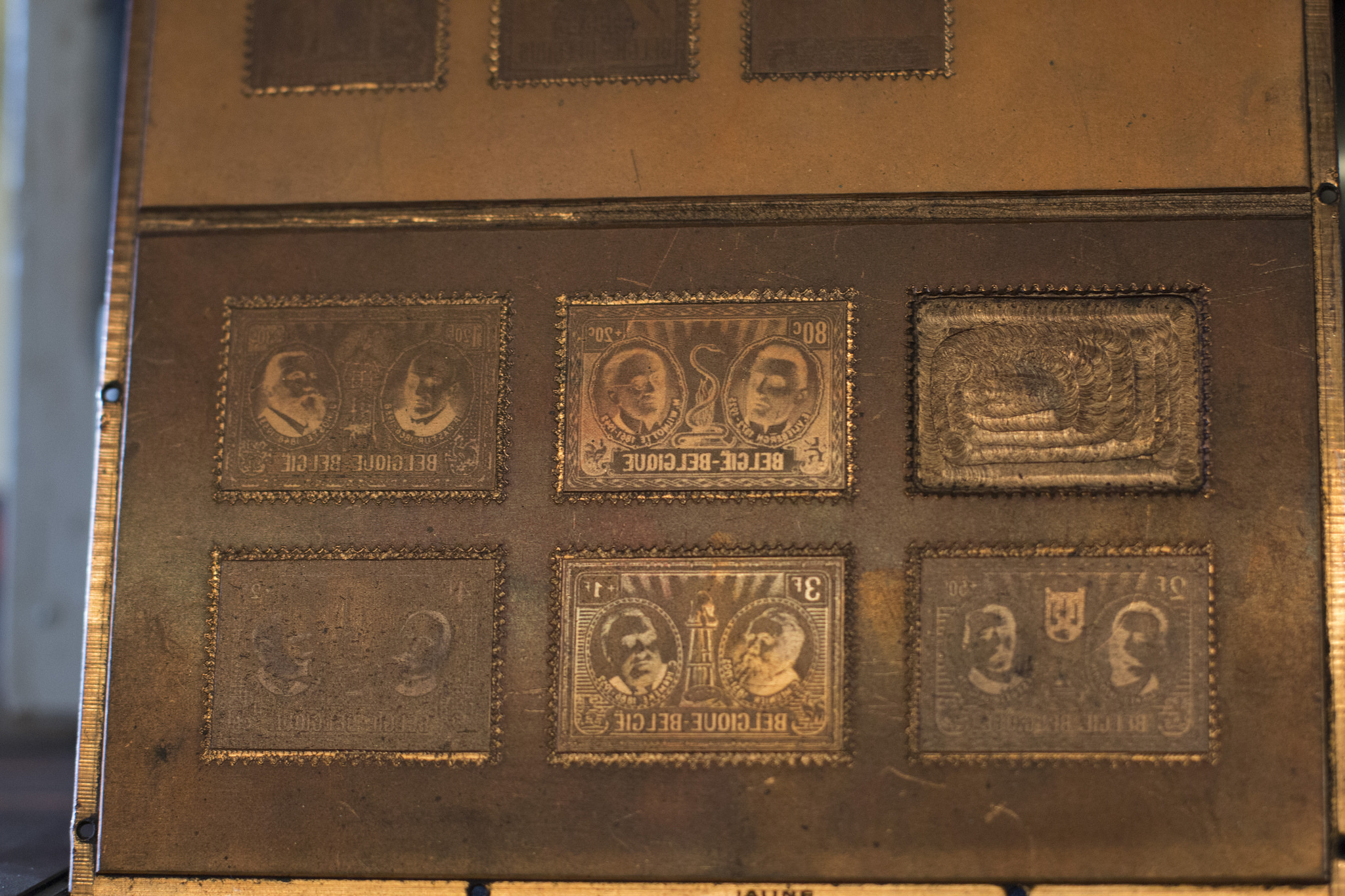

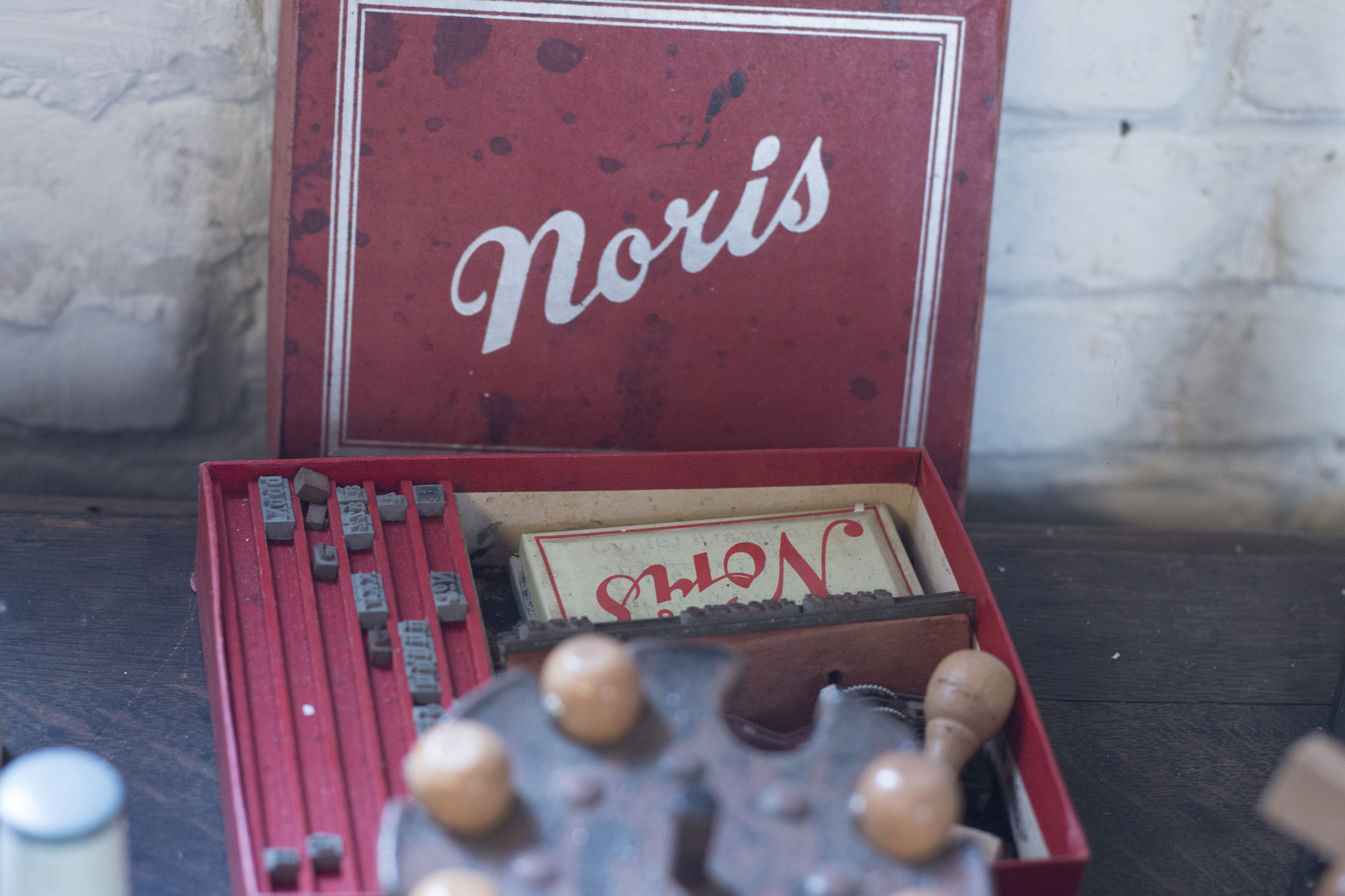
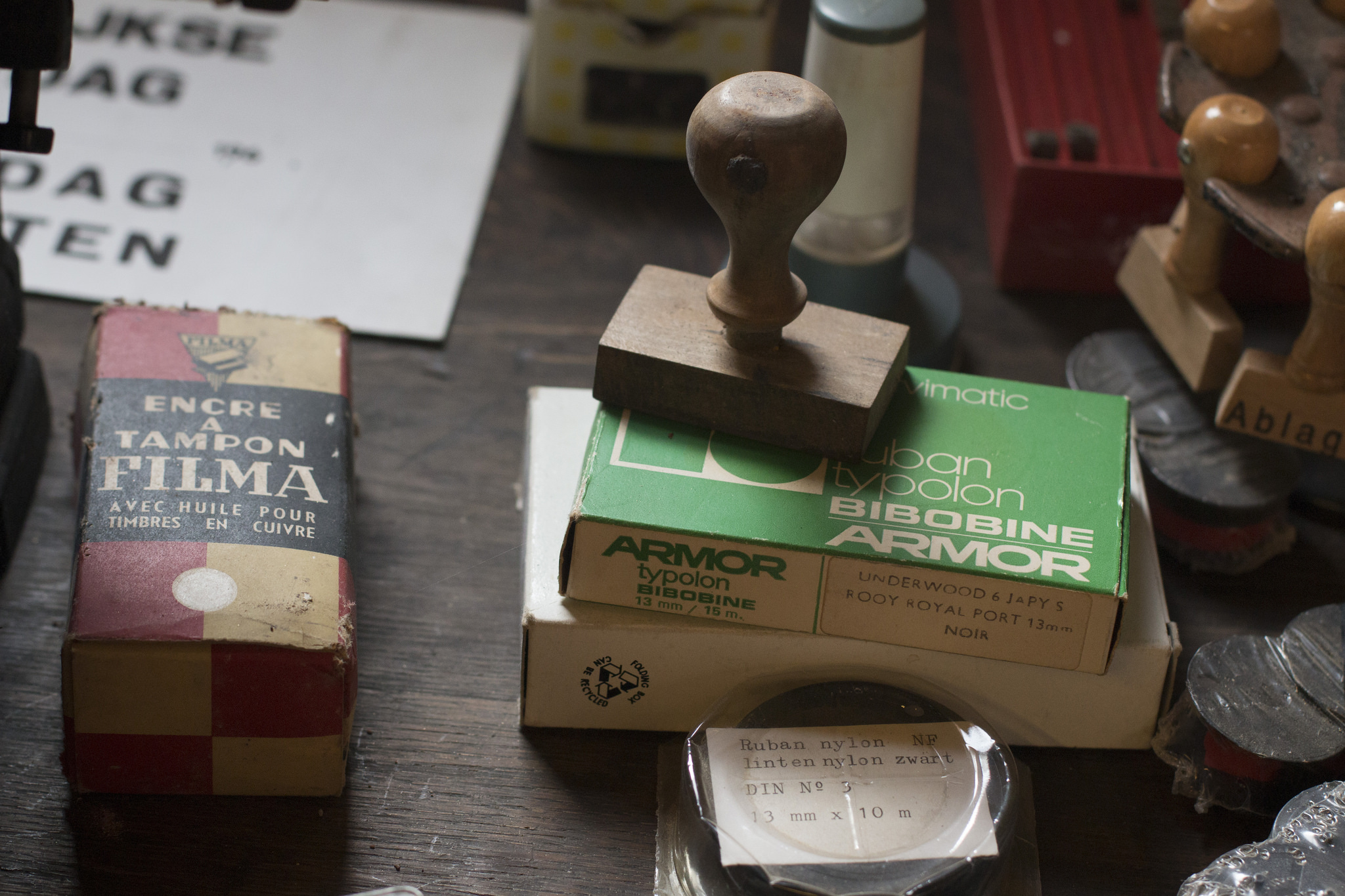

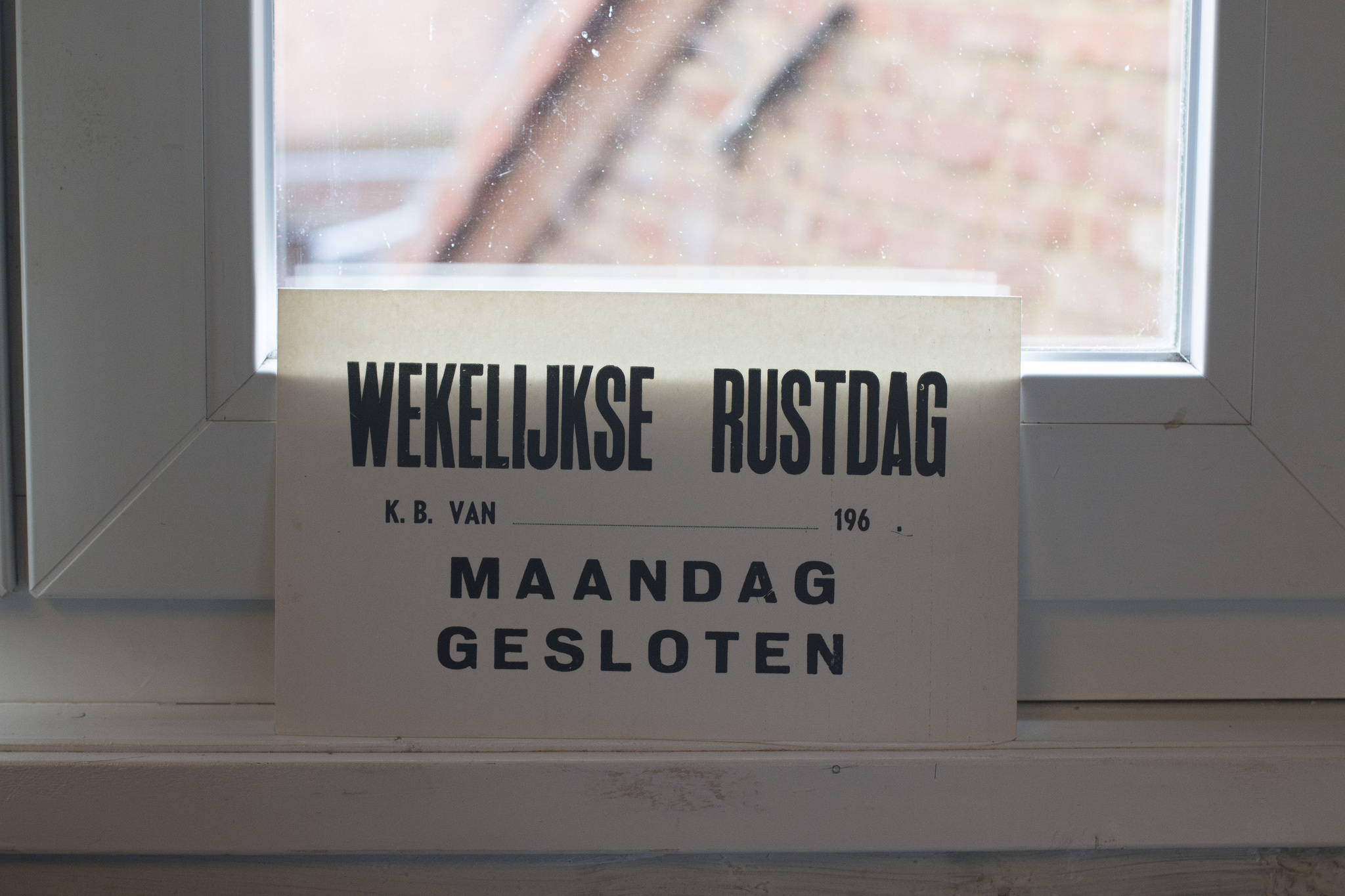
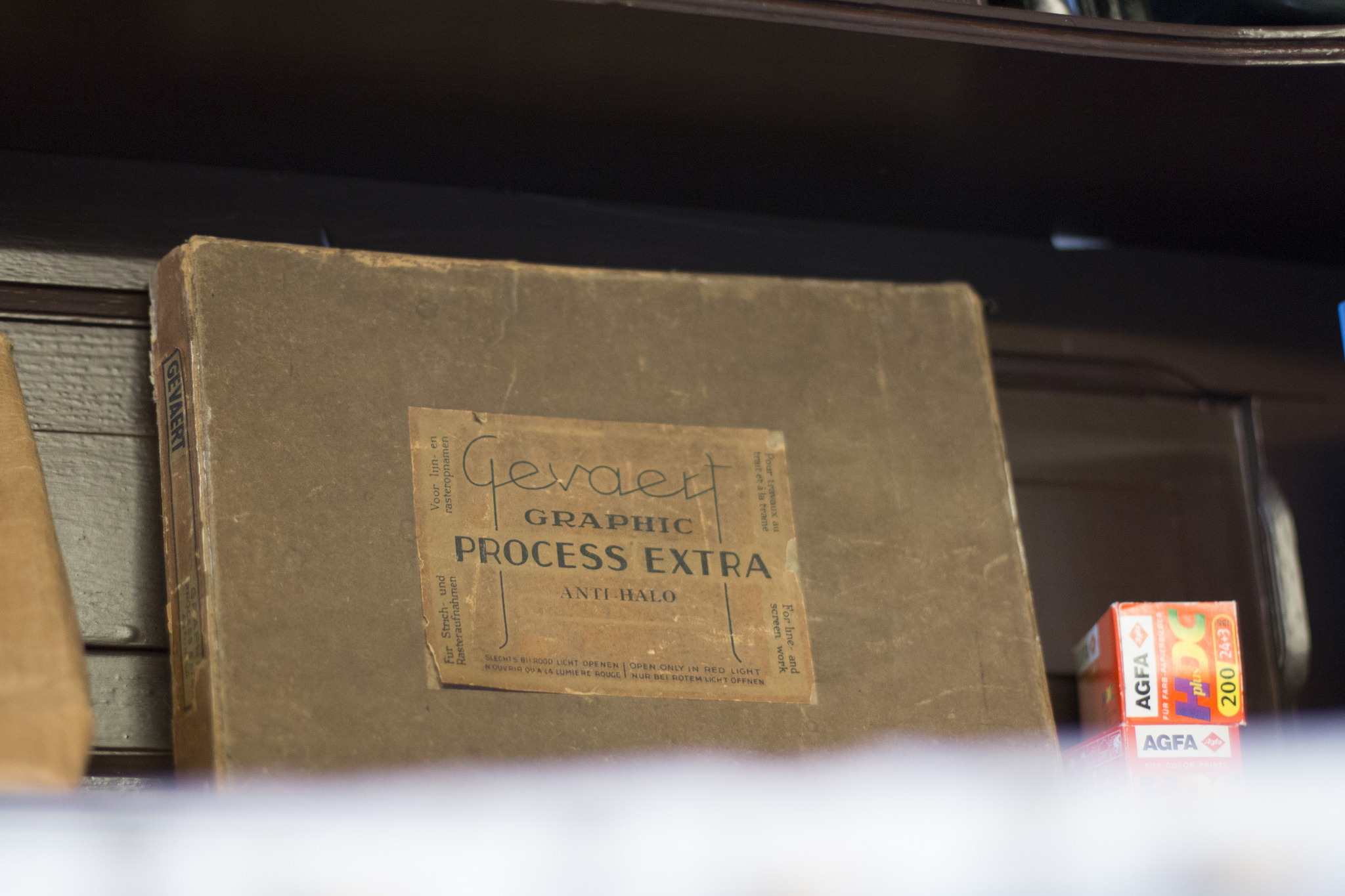

Moving forward on the second floor we discovered the printing house packed with various printing equipment, from cylinder presses of various sizes to hand press and linotype. The guide told us that the majority of the printing equipment was donated by Drukkerij Van Maercke from Deinze.
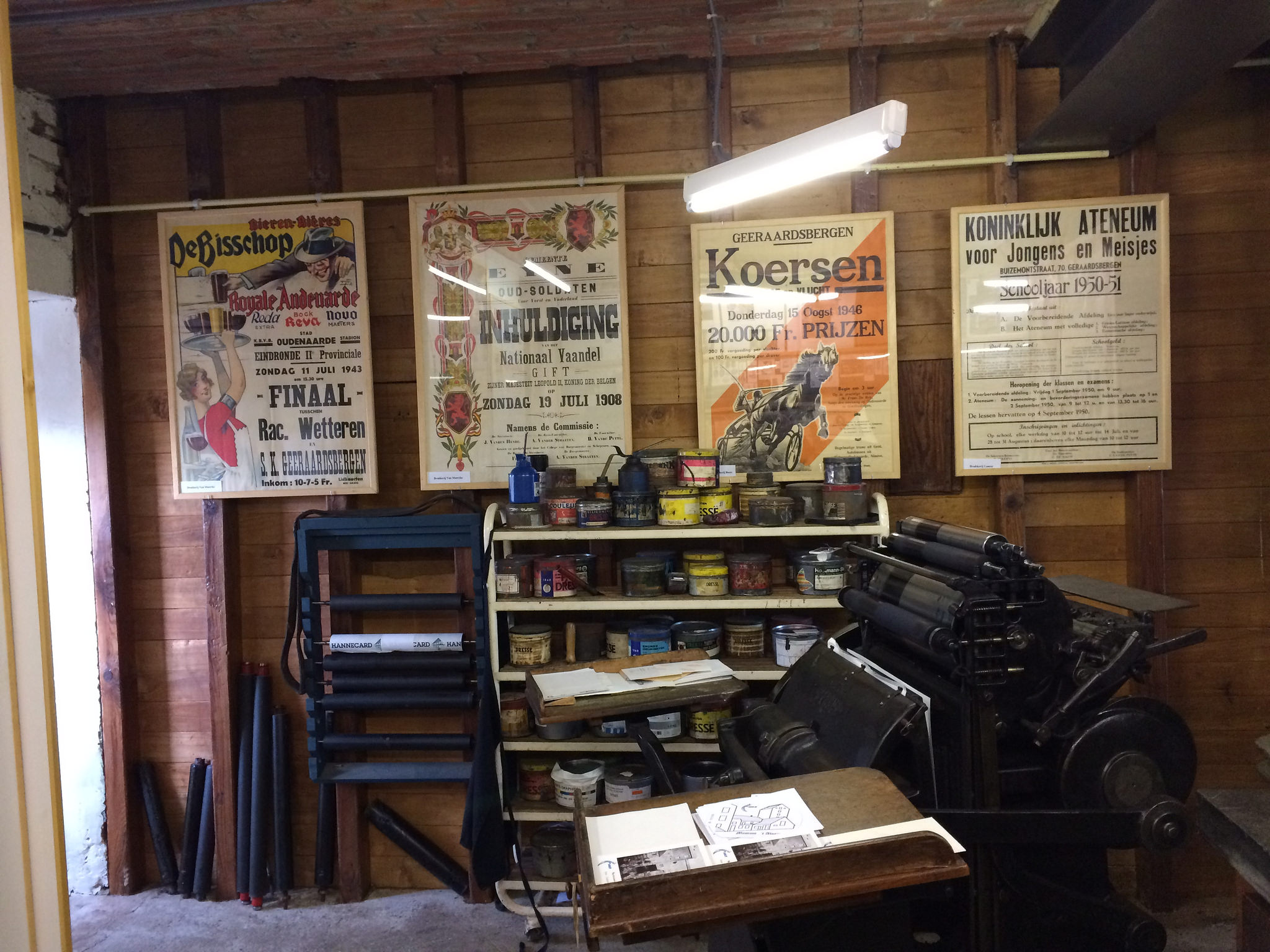

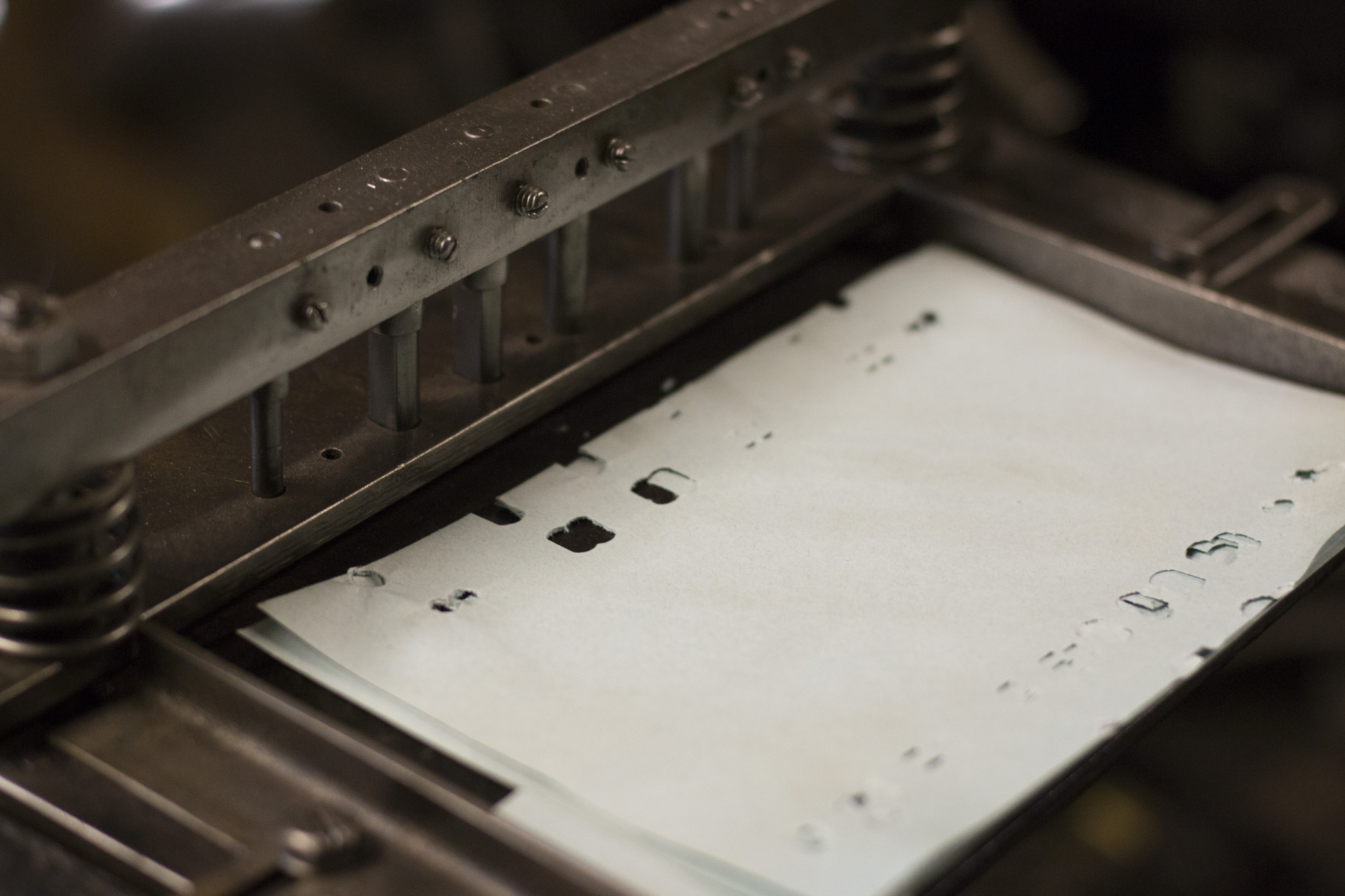
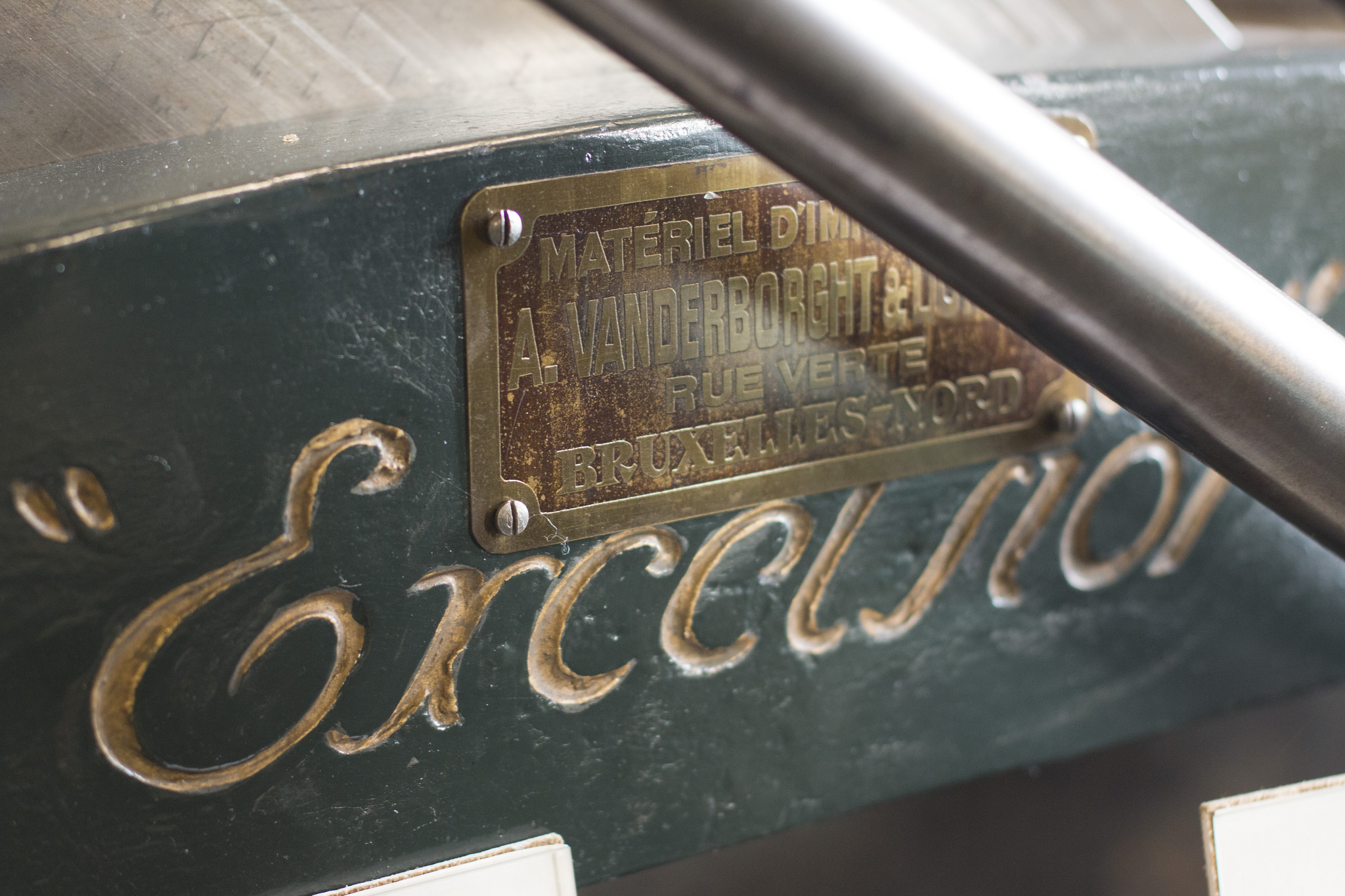
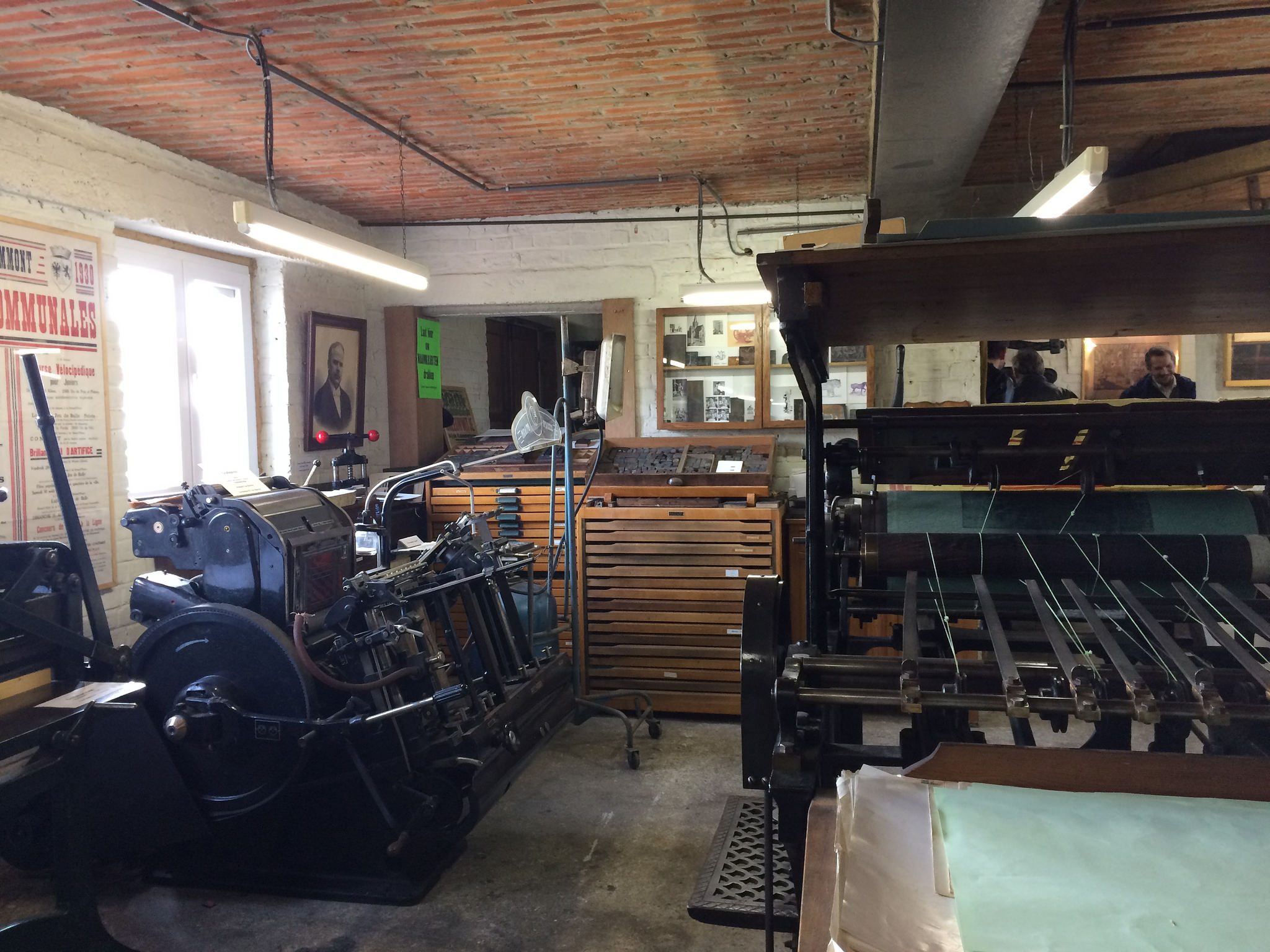
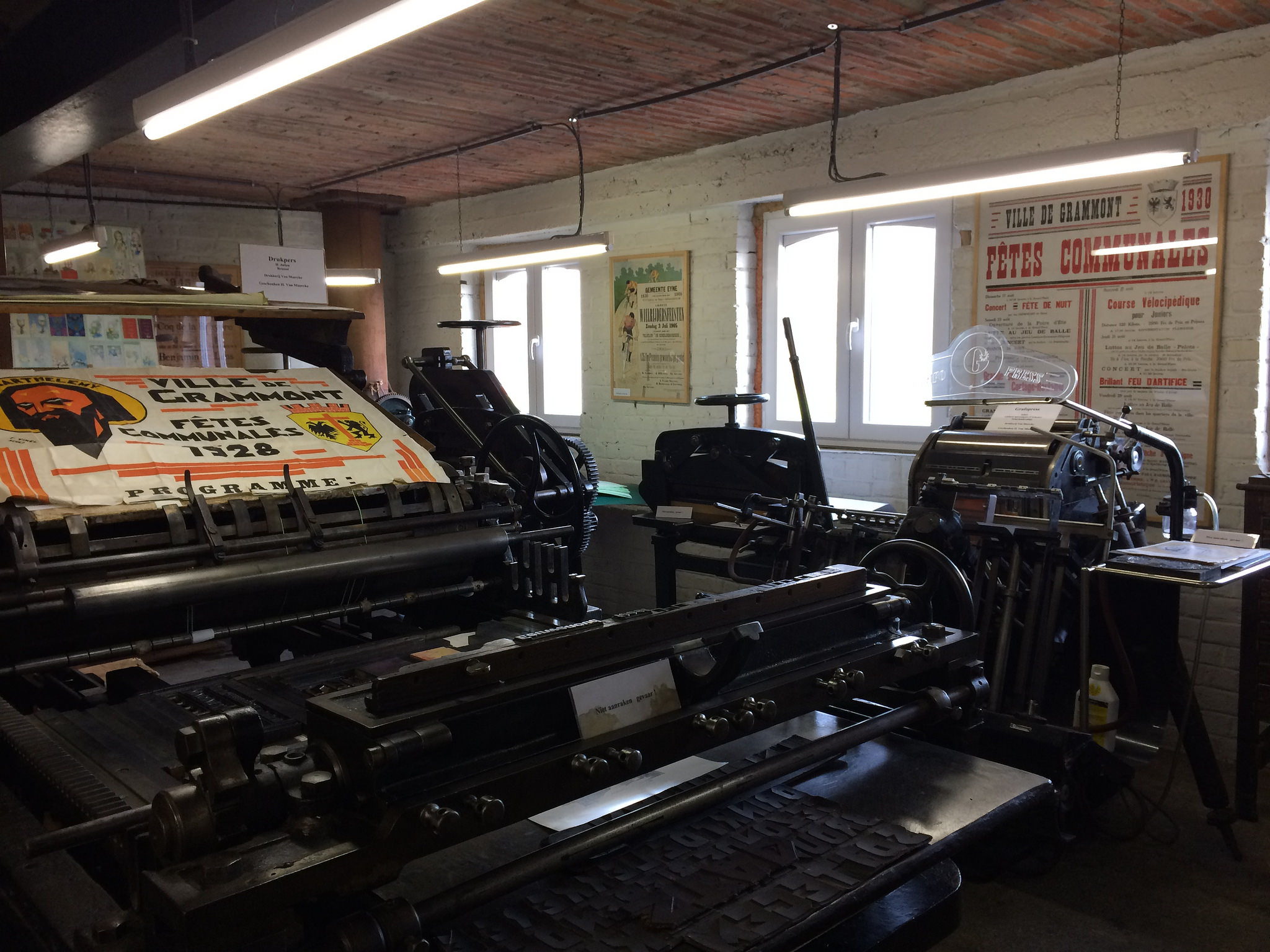
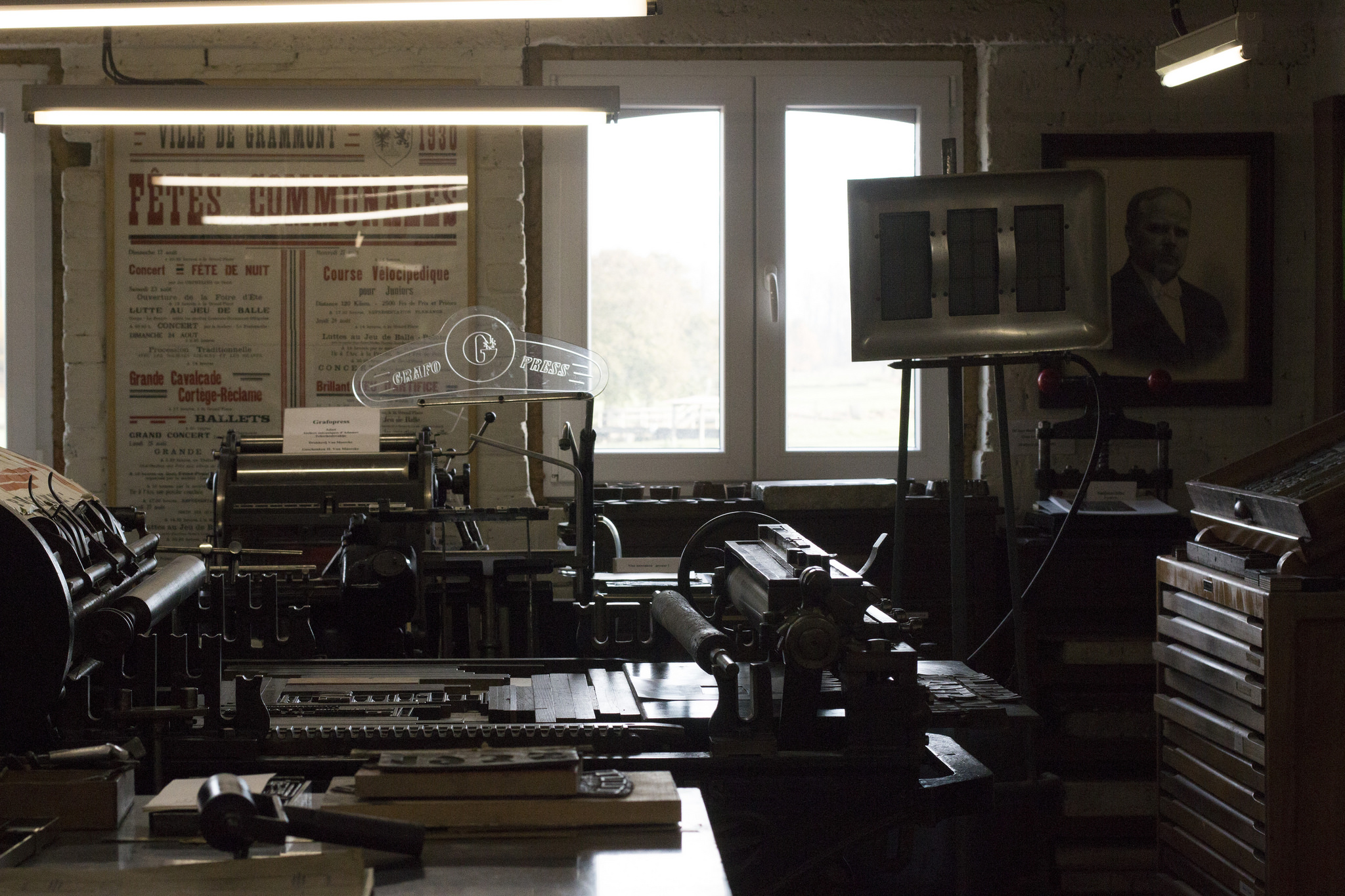
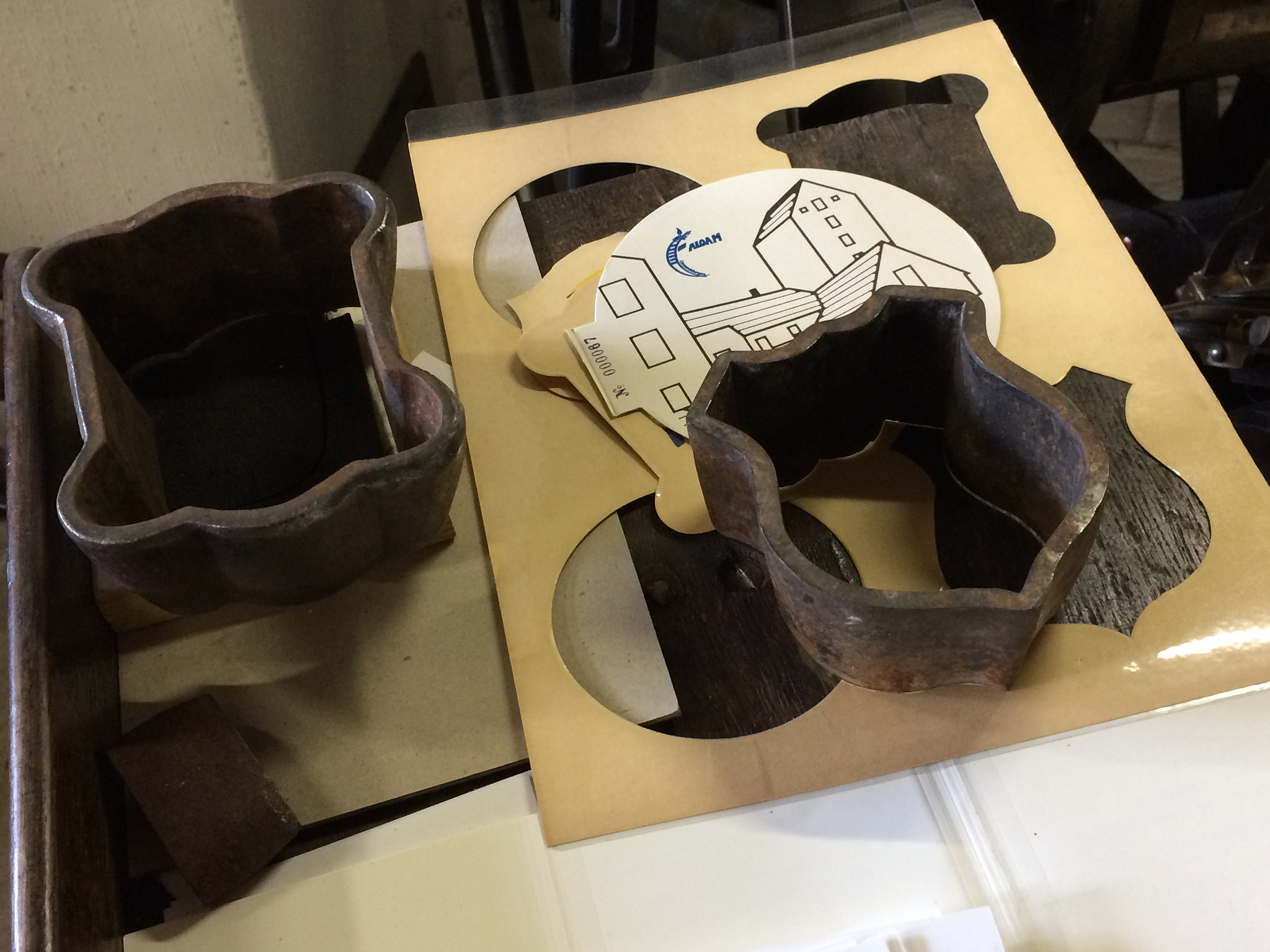
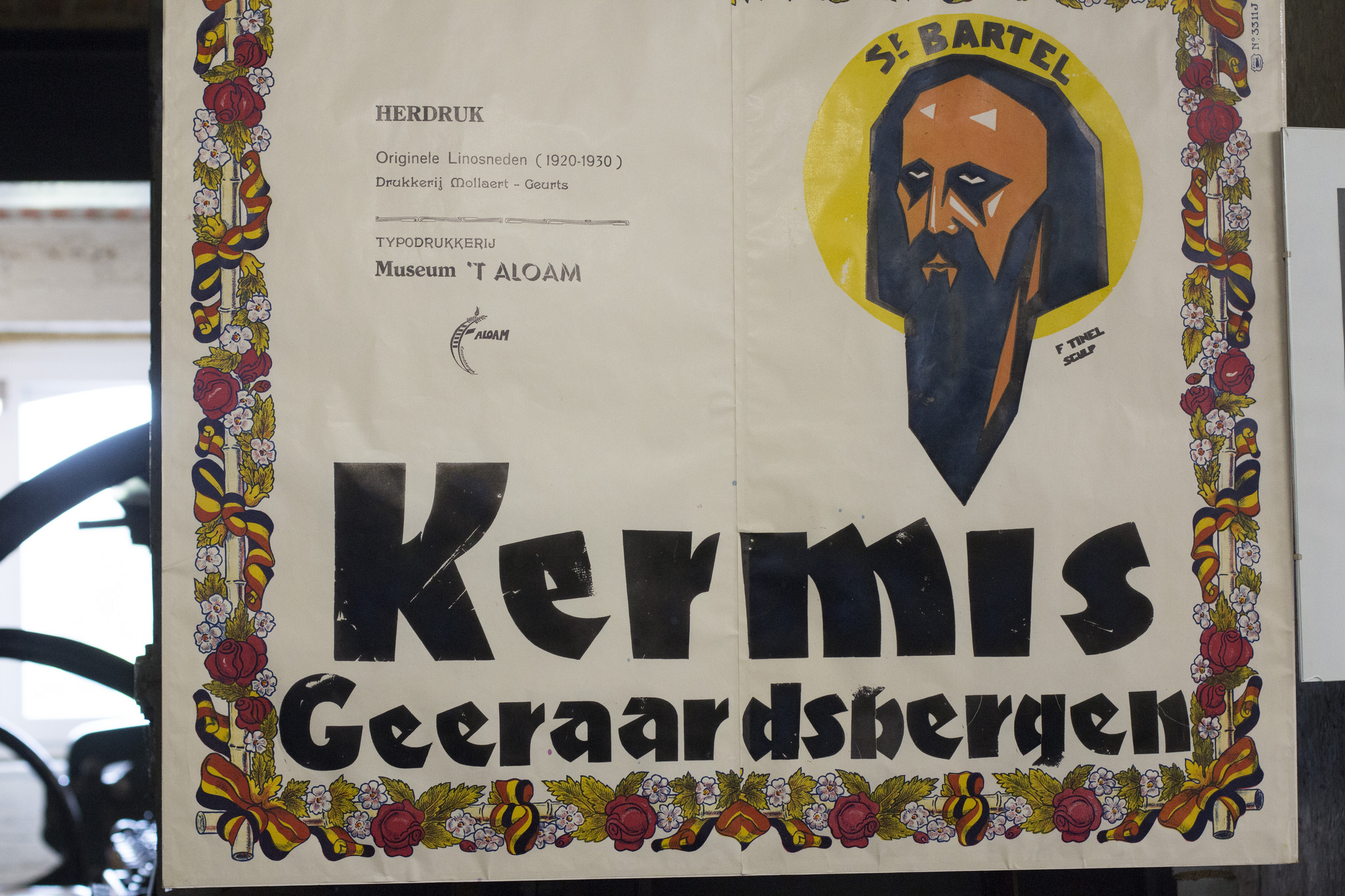
The museum holds a rather small, but beautiful collection of letterpress printed posters with some interesting typographic examples cut in linoleum, various cases of wood/metal type and a tiny collection of Dekora type and border system, produced during the 1920s 1920s and ’30s by “Schriftguß A.G. vormals Brüder Butter” in Dresden.
